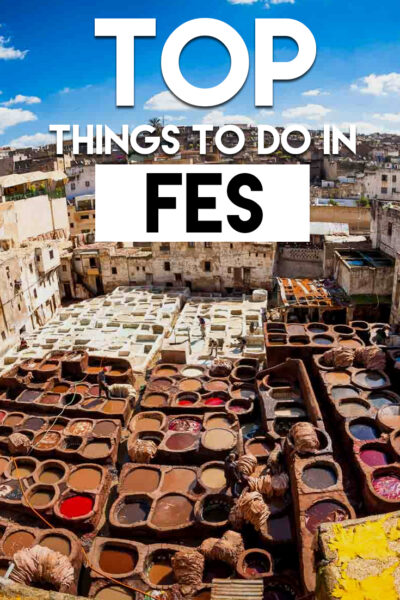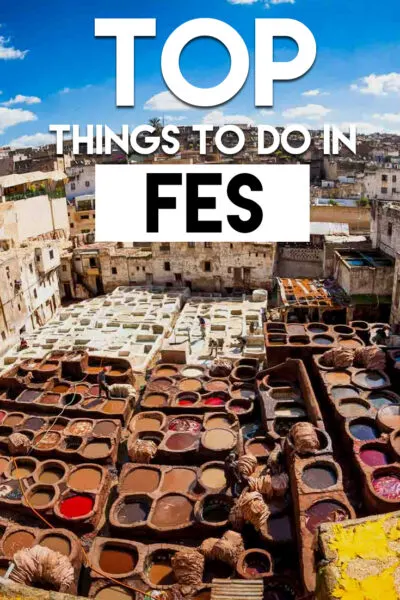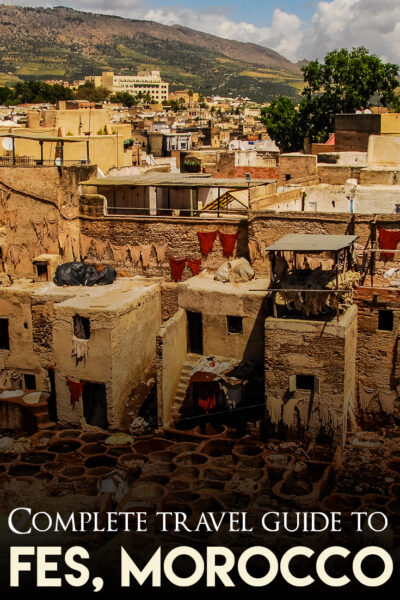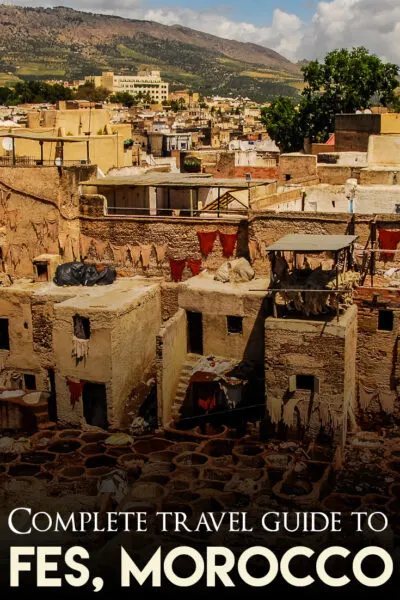

Protected UNESCO World Heritage site surrounded by 13th-century city walls and the seat of the Moroccan government until 1925, the old Fes Medina (Fez el-Bali) is home to one of the biggest mosques on the continent, endless palaces, madrasas, souks and tanneries and is best explored by foot.
➳ Find all: Hotels in Fes
We have included the best things to do in Fes in our travel guide. Some of the highlights of Fes include the famous Blue gates, Kairaouine Mosque University, the world’s oldest continuously functioning university dating back to 859, Al-Attarine Madrasa, and the Mellah Jewish Quarter.
The best things to do in Fes Walking Guide
Our 9 day Morocco Itinerary Travel Video
The most unique things to do in Fes
Take a photo of the Bab Bou Jeloud (The Blue Gate)
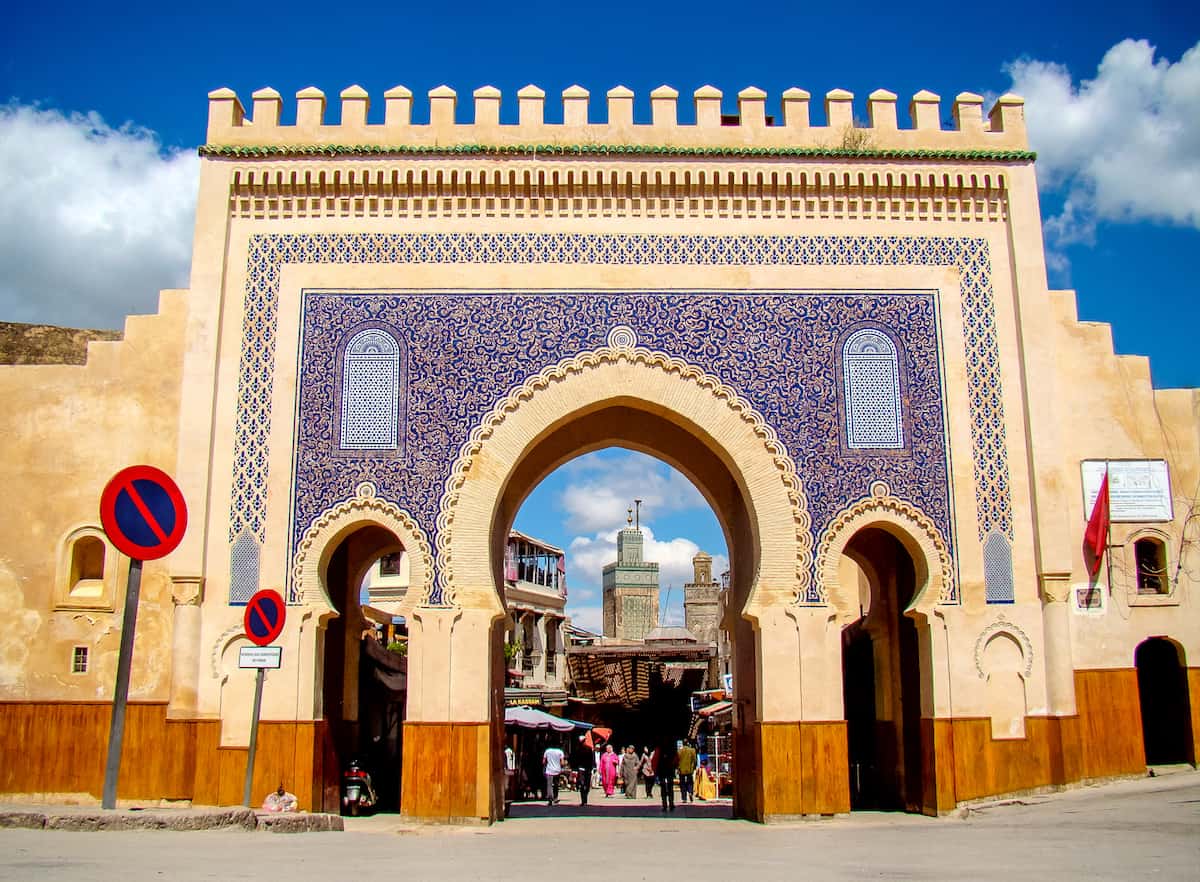

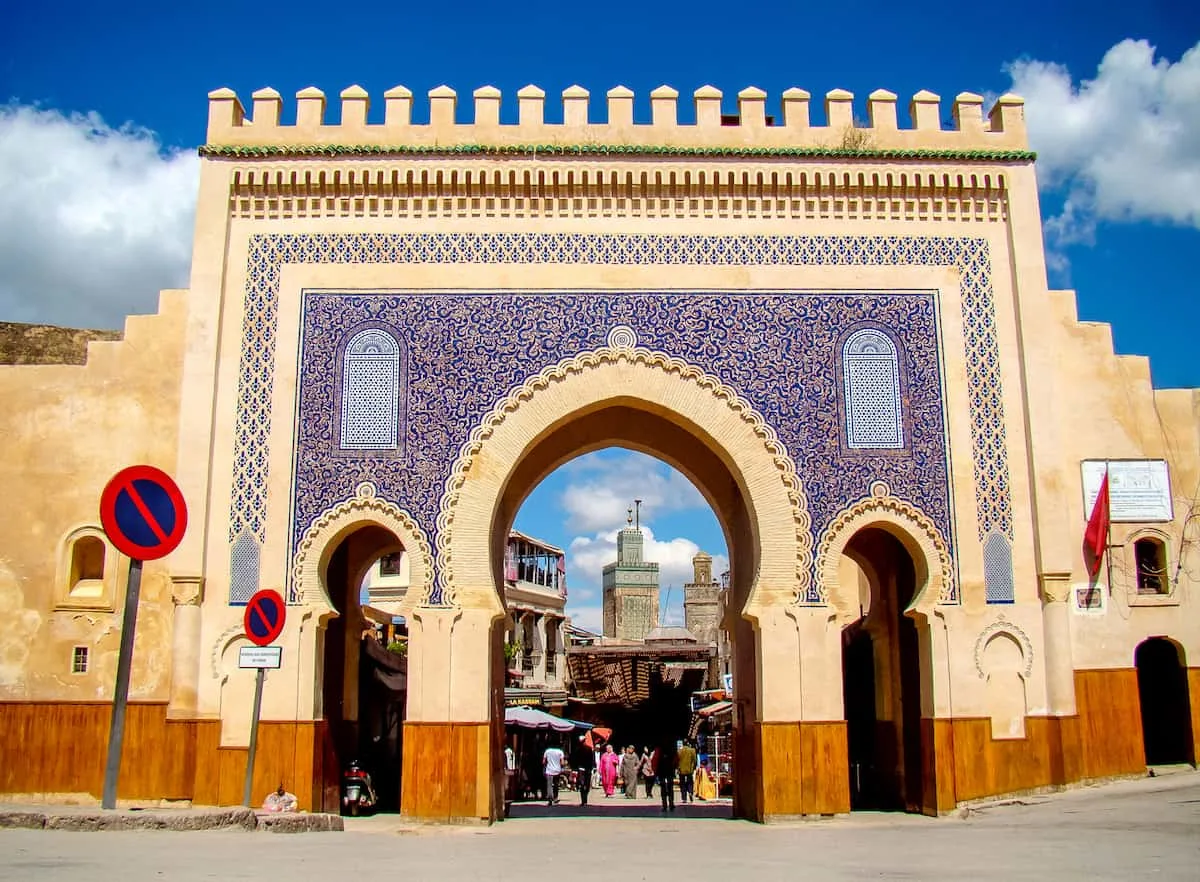

Built in 1913 in Moorish style and consisting of three symmetrical arches, Bab Bou Jeloud gates lead to the old part of Fes, also known as the medina area. The color dominating geometric, calligraphic and calligraphic ornaments on the gates is predominantly blue representing the color of Fes. The side of the gates facing the medina is green representing the color of Islam.
Visit the Medersa Bou Inania
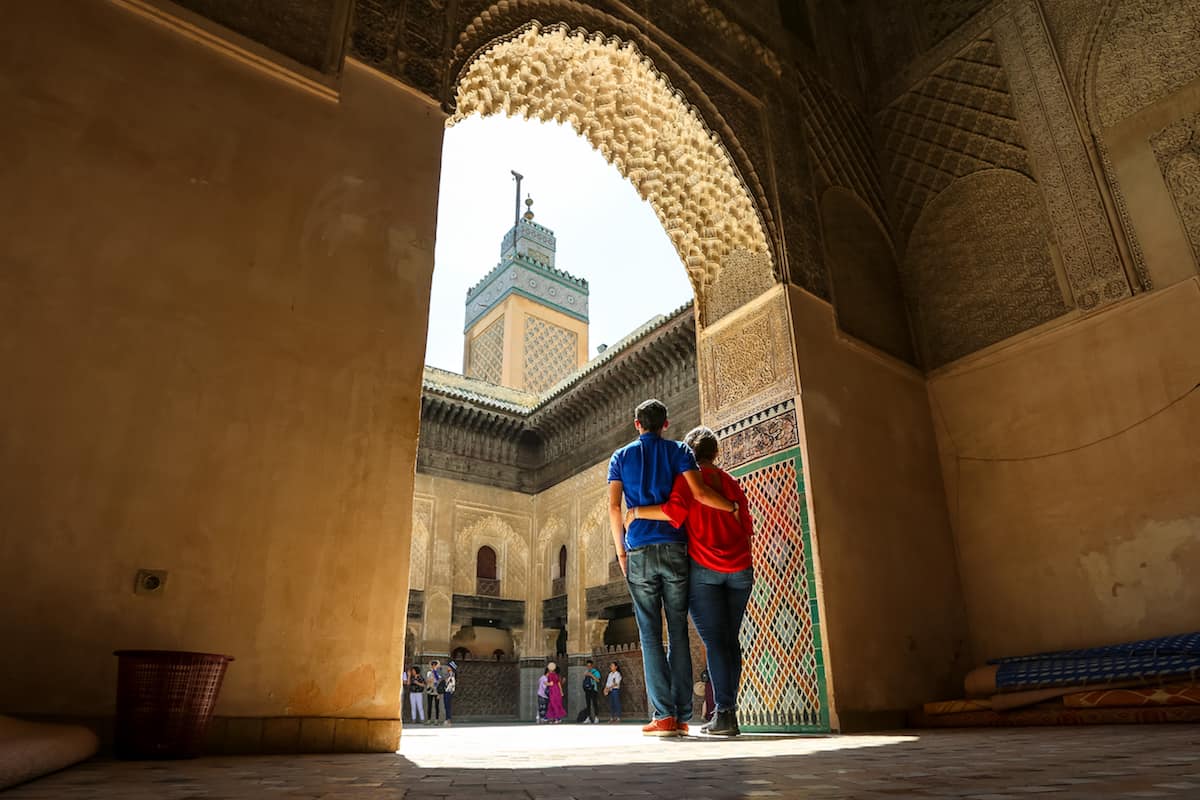

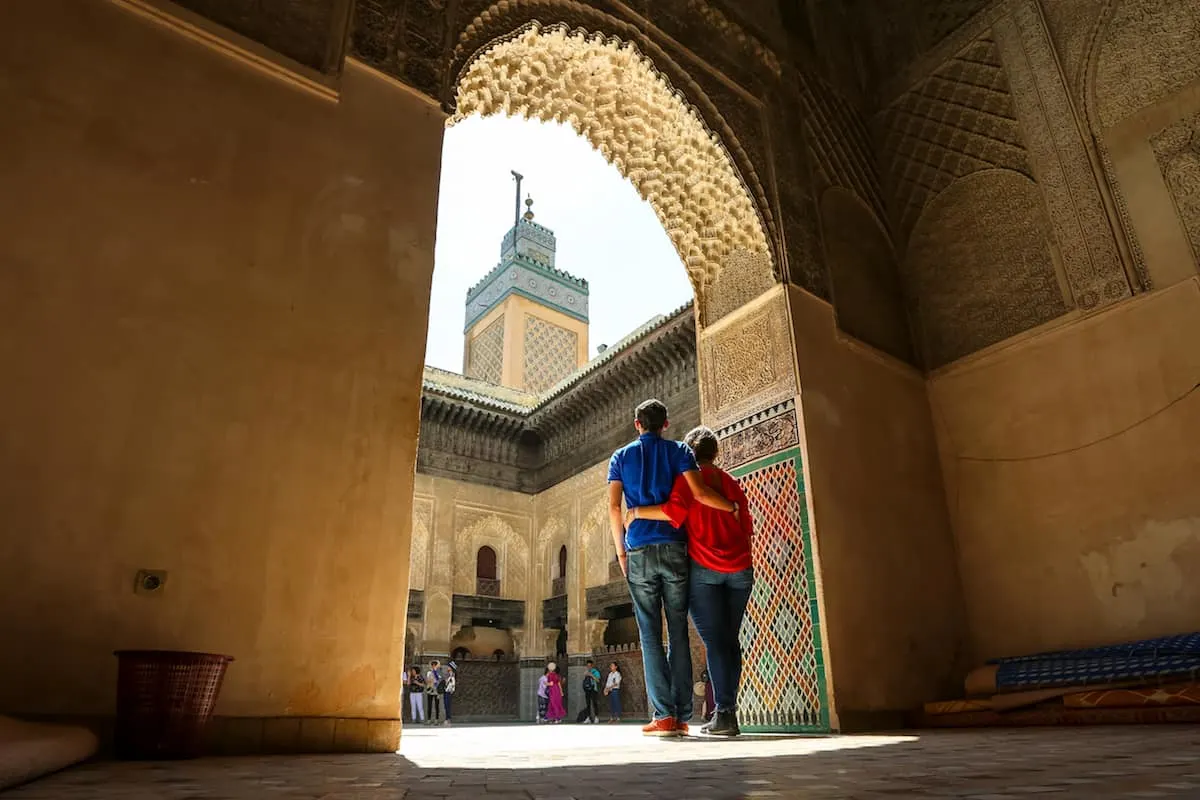

A short walk from Bab Bou Jelound you will find the Medersa Bou Inania, completed in 1358. It features a classic Moroccan decorative styles and is the only medersa in Fes with a minaret. This medersa is one of the few religious sites in Fes that non-Muslims may enter. Climb up to the roof for views of the roof and minaret of the Grande Mosquée nearby.
It is open daily from 9am to 5pm. It is close during prayers. Ticket are 20 dirham.
Visit from outside the second largest Mosque in Morocco: Kairaouine Mosque & University
As the spiritual heart of Fes and Morocco, this religious and educational complex was established in 859 and expanded in the 12th century. Today it can accommodate up to 20 000 people at prayer. Kairaouine Mosque is one of Africa’s largest mosques, second largest in Morocco where non-Muslims are forbidden to enter. Instead, they can satisfy curiosity by glimpses of the mosque’s courtyard or by visiting University library that has been recently impressively restored.
Take a photo of the Royal Palace doors
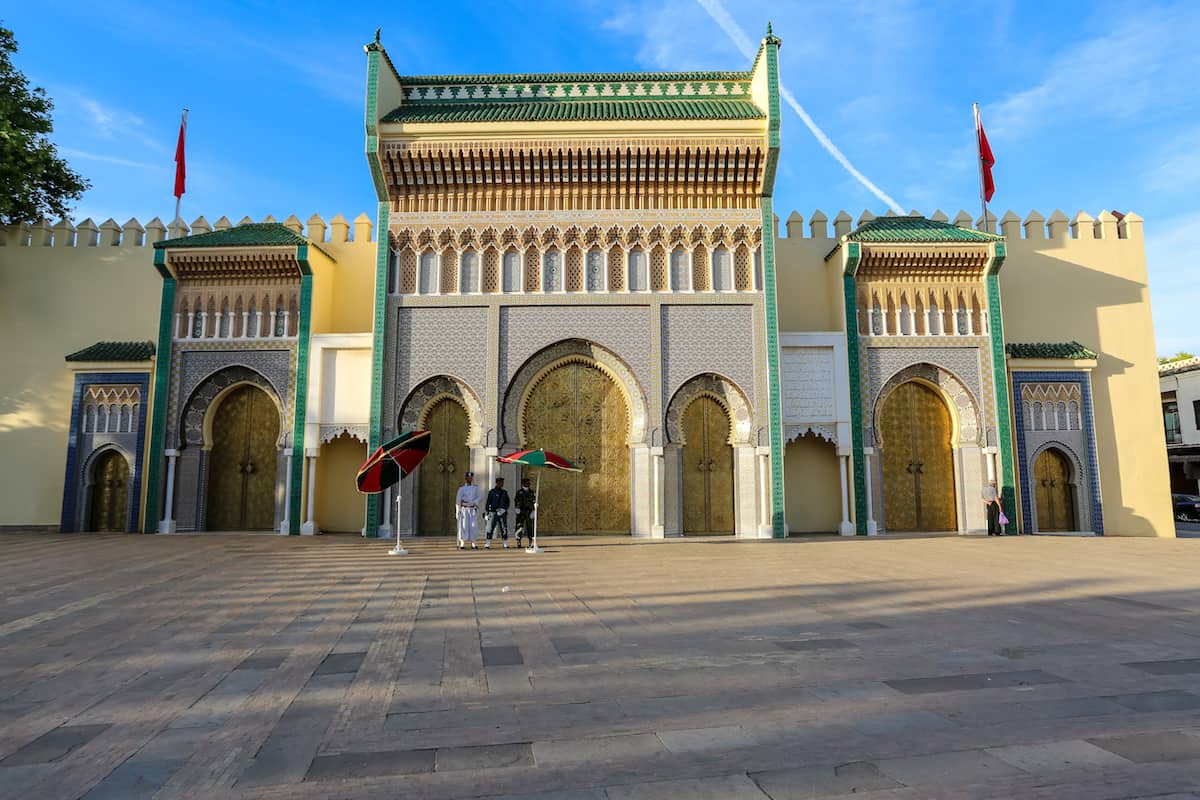

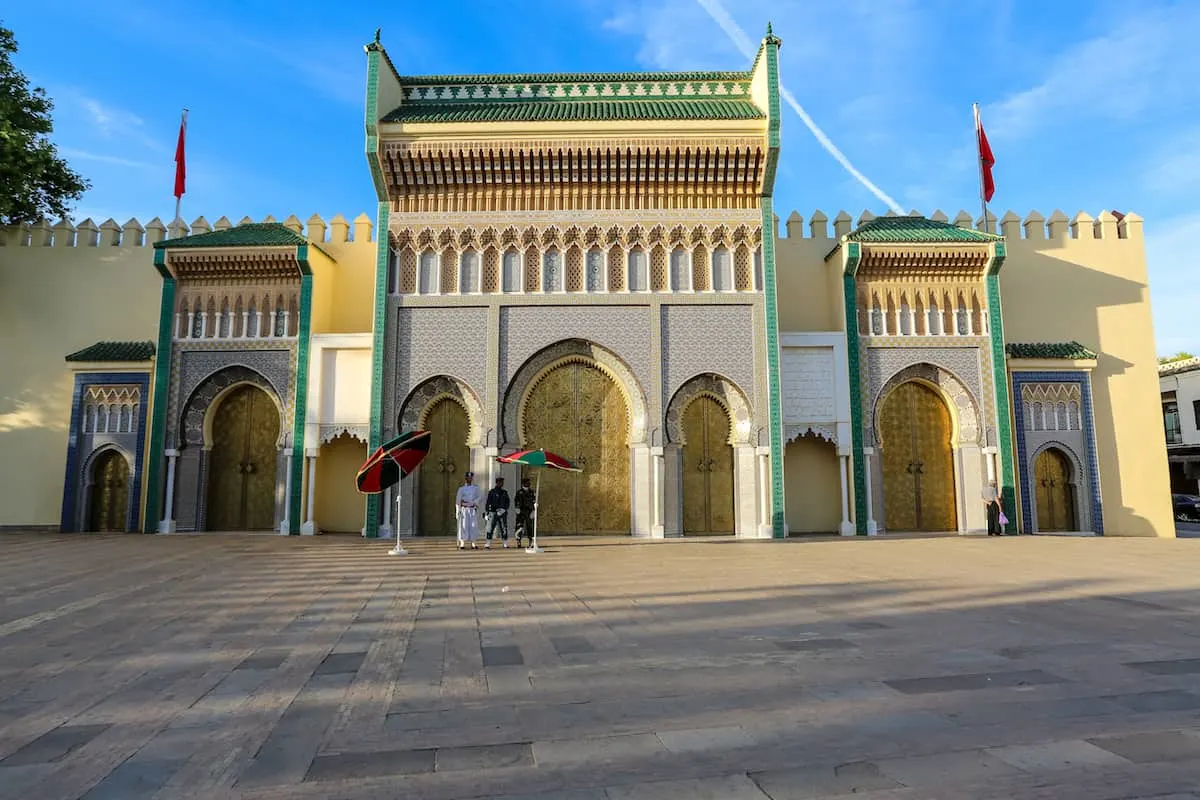

Royal Palace known as Dar el Makhzen or the Sultanate Palace has for centuries been a residence of Moroccan royals when visiting Fes. Since this 17th-century mansion is closed for the public visitors can only guess what lies behind impressive gates, arches, and richly decorated facade. It seems as though on the premises of the palace that stretches over 80 hectares of land are situated even more palaces and more gardens. The palace is adjacent to the Jewish quarter, the Mellah.
Take a break at the Jnan Sbil Gardens
A place where locals and visitors find a retreat from the noise and heat of medina are over two centuries old Jnan sbil gardens spanning across an area of 7.5 hectares. Regarded as a jewel of Arab Andalusian tradition and once part of the Royal Palace, Jnan Sbil was donated to the city in the 19th century and as such is the oldest public park in Morocco.
Check out the Nejjarine Museum of Wooden Arts & Crafts
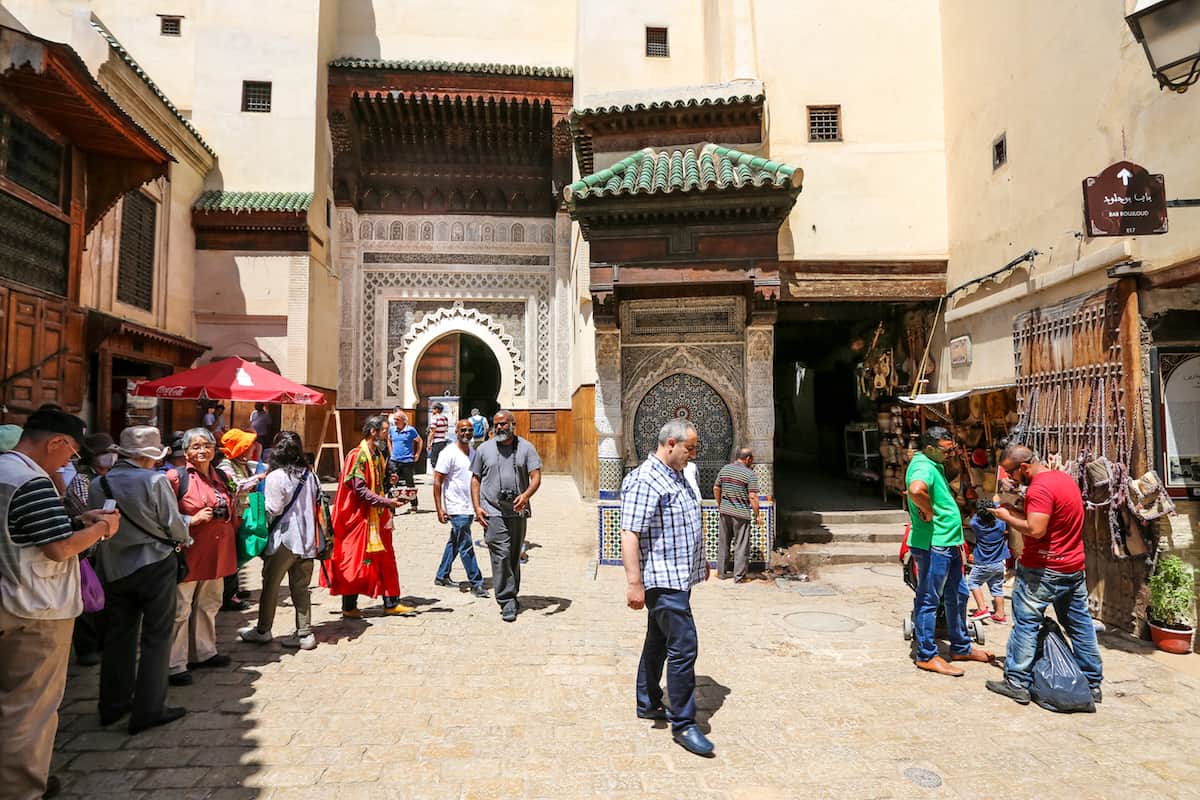

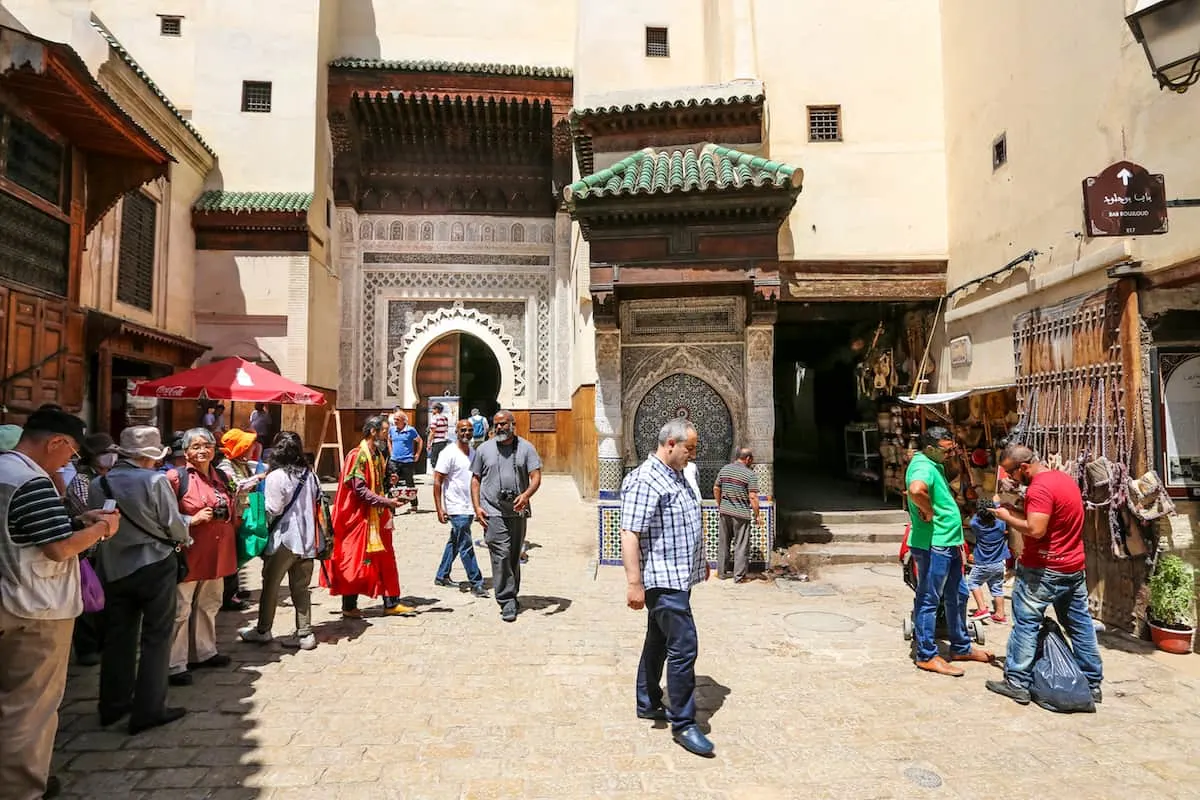

Opened in 1998, Nejjarine Museum of wooden arts & crafts is situated in former Nejjarine Fonduk –– a place where traders took lodgings and stored and sold their goods during the 18th century. The museum collection of different craftsmen’s tools, prayer beads, ancient chests, and musical instruments is displayed in various parts of the building such as the courtyard and rooms.
The museum is located in the picturesque Place el Nejjarine (Carpenters Square) where you can also enjoy at the site to one of the most popular and best known mosaic fountains, Nejjarine fountain. The museum has a rooftop cafe with panoramic views over the medina.
Open daily 10am-7pm. Ticket: 20 dirham
Visit the Dar Batha Museum
Located in Hispano-Moorish palace from 19th century, Batha museum houses a big collection of traditional Moroccan arts and crafts dating from with artifacts dating from the 14th century to modern-day. After seeing the fine examples of hand-painted ceramics, jewelry, carpets, woodwork, embroidery and similar, take a rest in museums garden.
Open Wed-Mon 8.30am-12pm and 12pm-6pm. Ticket: 10 dirham.
Walk around the Fez Mellah (Jewish Quarter)
Although after WWII the majority of Jewish population left, a small but vibrant Jewish community has stayed taking care of remaining synagogues and going about business as usual in the Gold Souk and in quality antique furniture stores. To the southwest of the Jewish quarter, established in 1438 segregating the Jewish community from Muslim community, you will find a Jewish cemetery still in use and with its guardians. Numerous white tombs stretch down the hill with the oldest tomb being a of a rabbi who died in 1600.
Go inside the Medersa el-Attarine
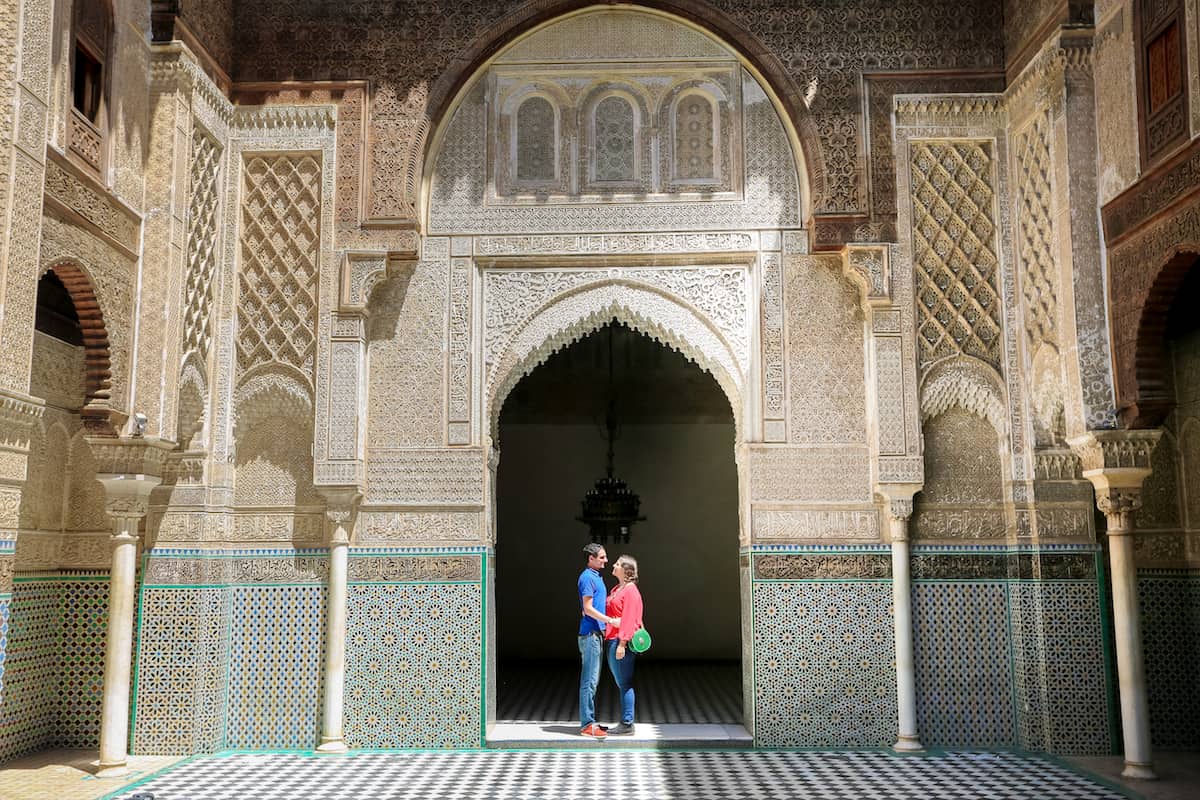

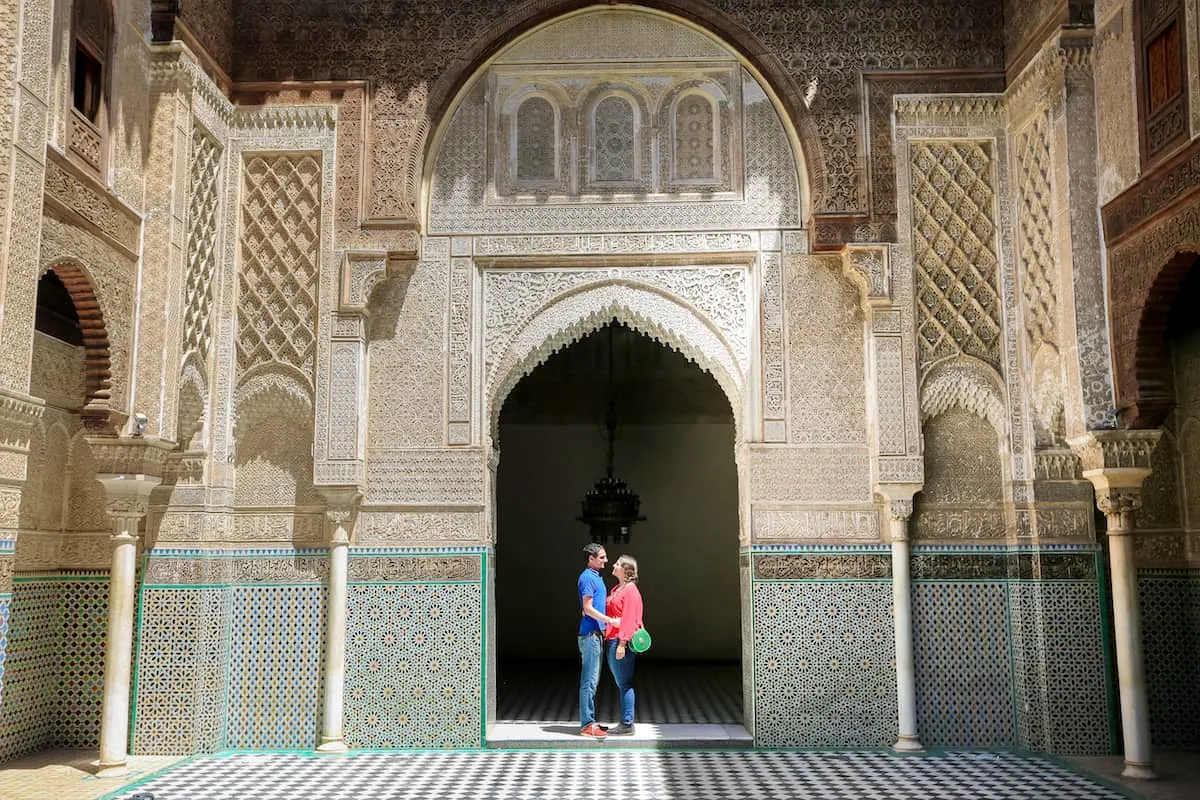

Designed as an annex to the nearby Kairaouine, Medersa el-Attarine was founded in 1325 and has undergone a process of careful restoration. The central courtyard counts for the most striking part of the medersa with marvelous displays of the traditional patterns of Merenid artisanship.
Open daily from 8.30am-12.30pm, and 2.30-6.30pm. Ticket: 10 dirham
Take a quick peek at the Zaouia de Moulay Idriss II
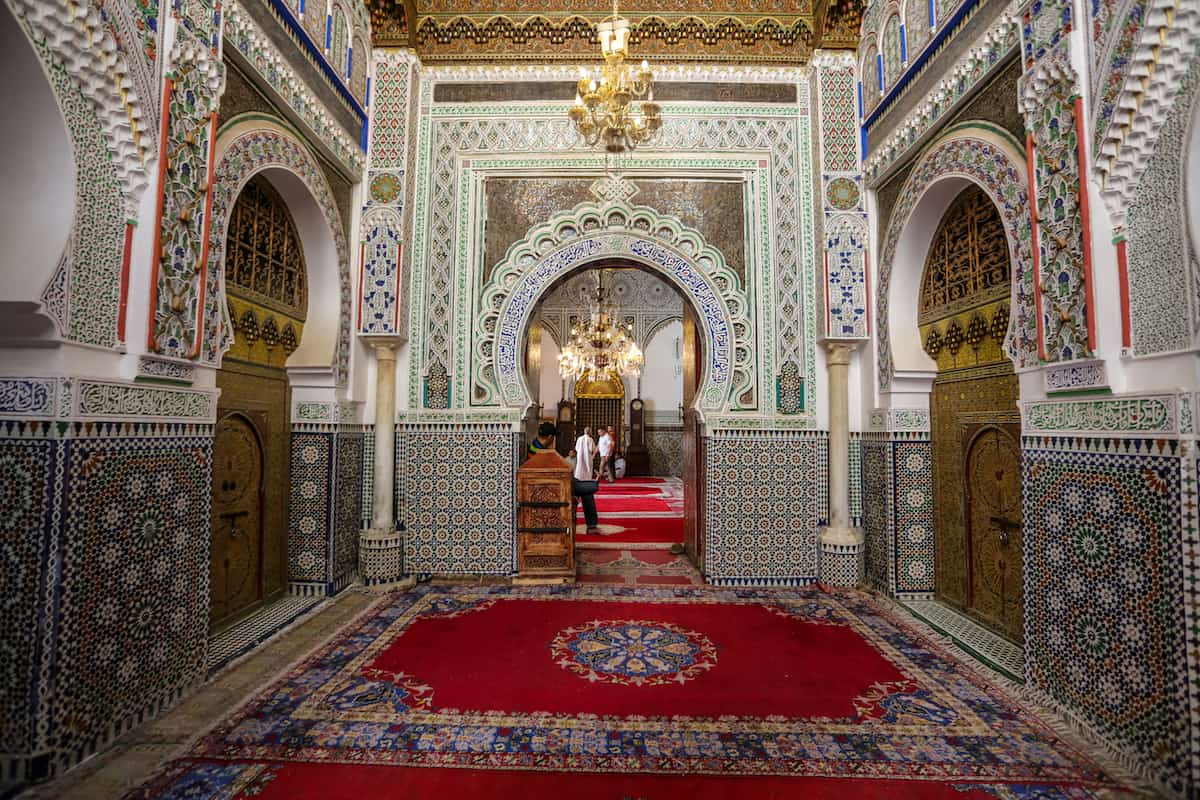

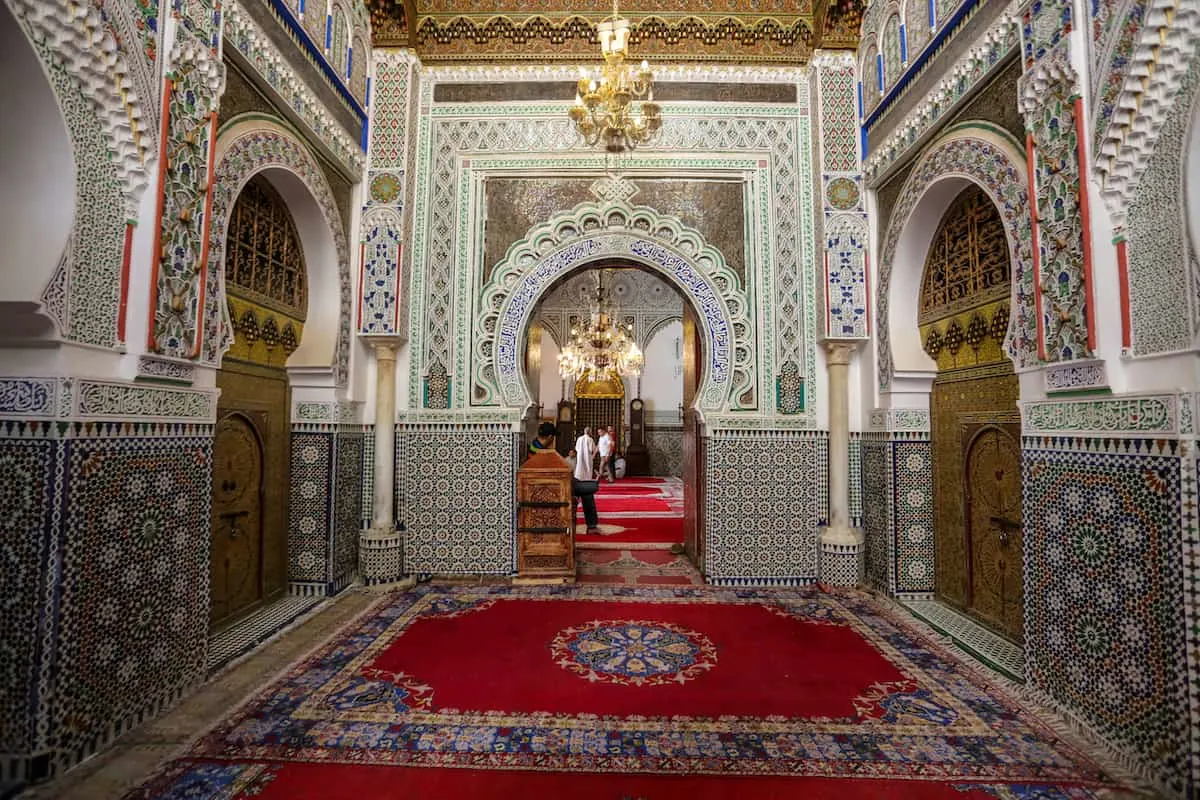

The city’s holiest shrine built in the 9th century, restored in 14th century is a place of pilgrimage for many who believe it brings good luck and fertility. Non-Muslims are not allowed to enter, but a peek through the door will reveal a richly decorated tomb surrounded by lit candles and incense.
Seffarine Square
One of the noisiest squares in Fes where coppersmiths go about practicing one of the oldest trades in Fes, the copperware craftsmanship.
Make sure to visit the Chaouwara Tanneries
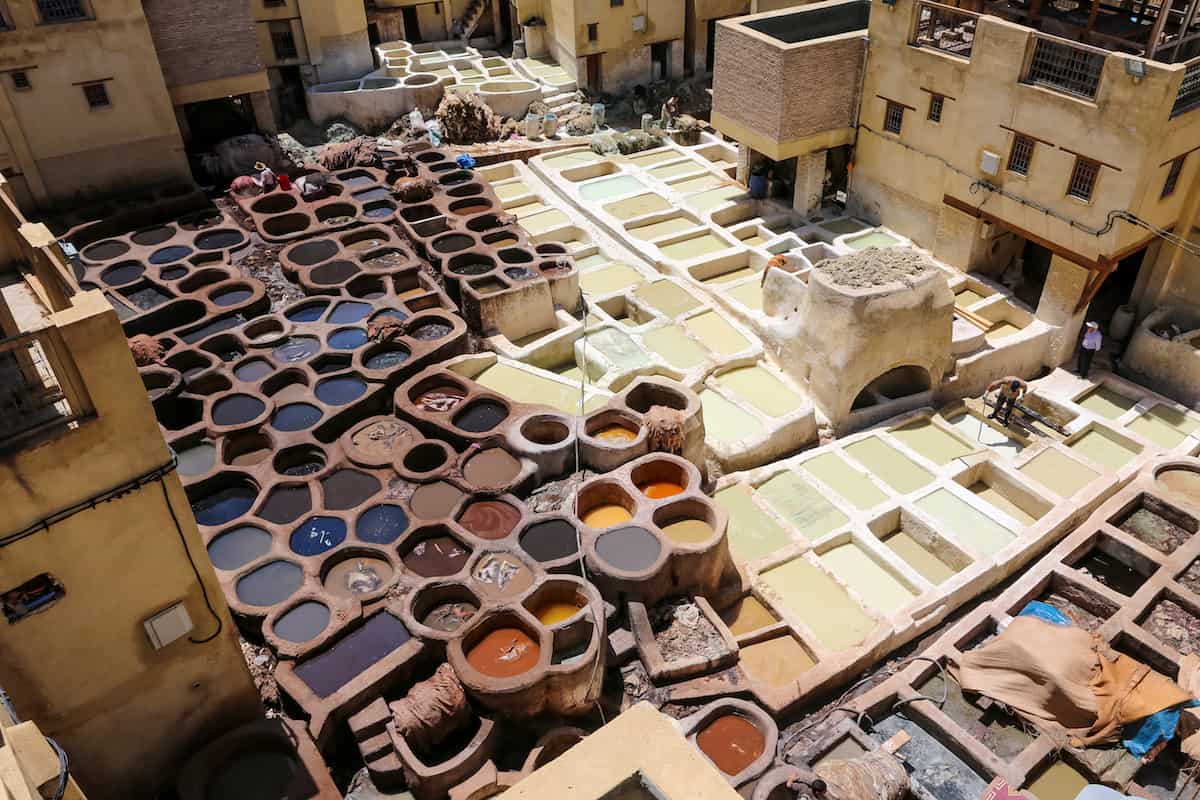

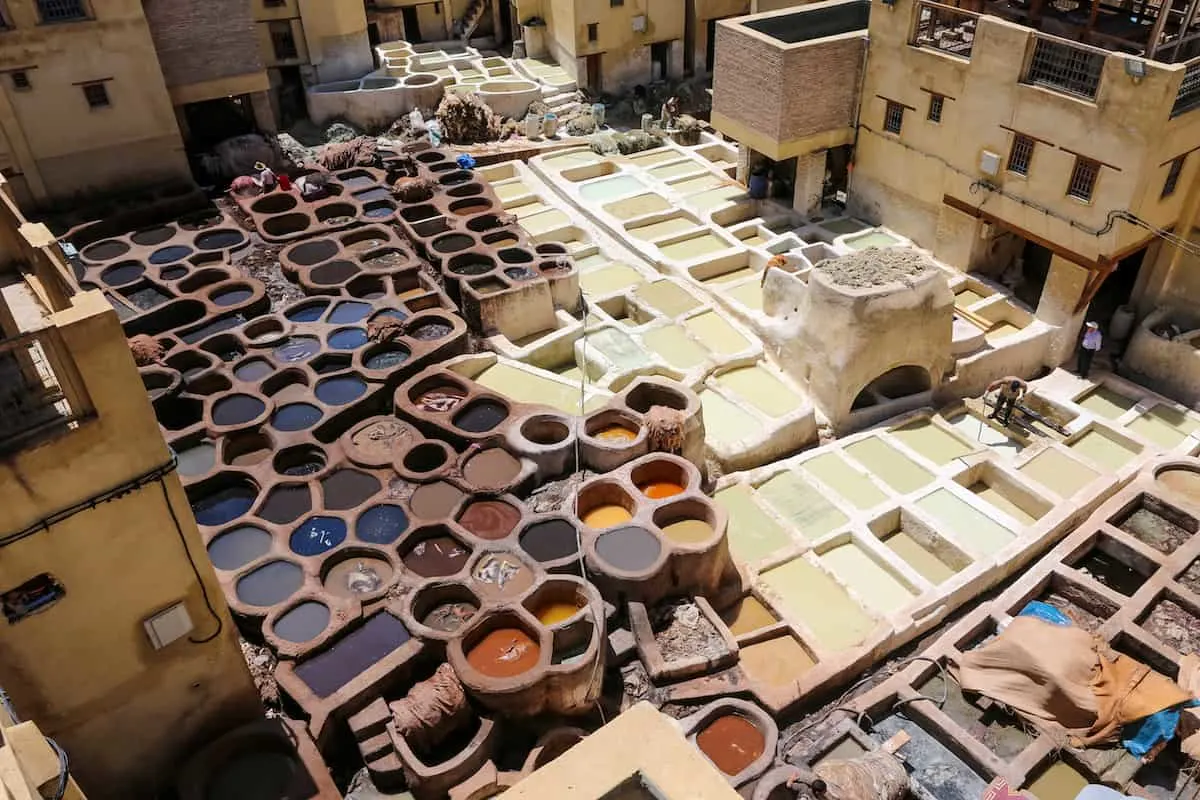

Well known and among most photographed sites in Fes is the Chaouwara Tanneries, oldest Moroccan tannery with 600 years of tradition where leather is still dyed all with natural colors. Prepare for smells that can be heavy on the stomach and for merchants that can at times be rather aggressive and as always, watch out for scams. For best photographs try to get to the leather shop at door No. 10 on Derb Chaouwara and its terrace. Check out this photography guide of the Tanneries in Fes for some extra inspiration.
Take a tour at the Art Narji
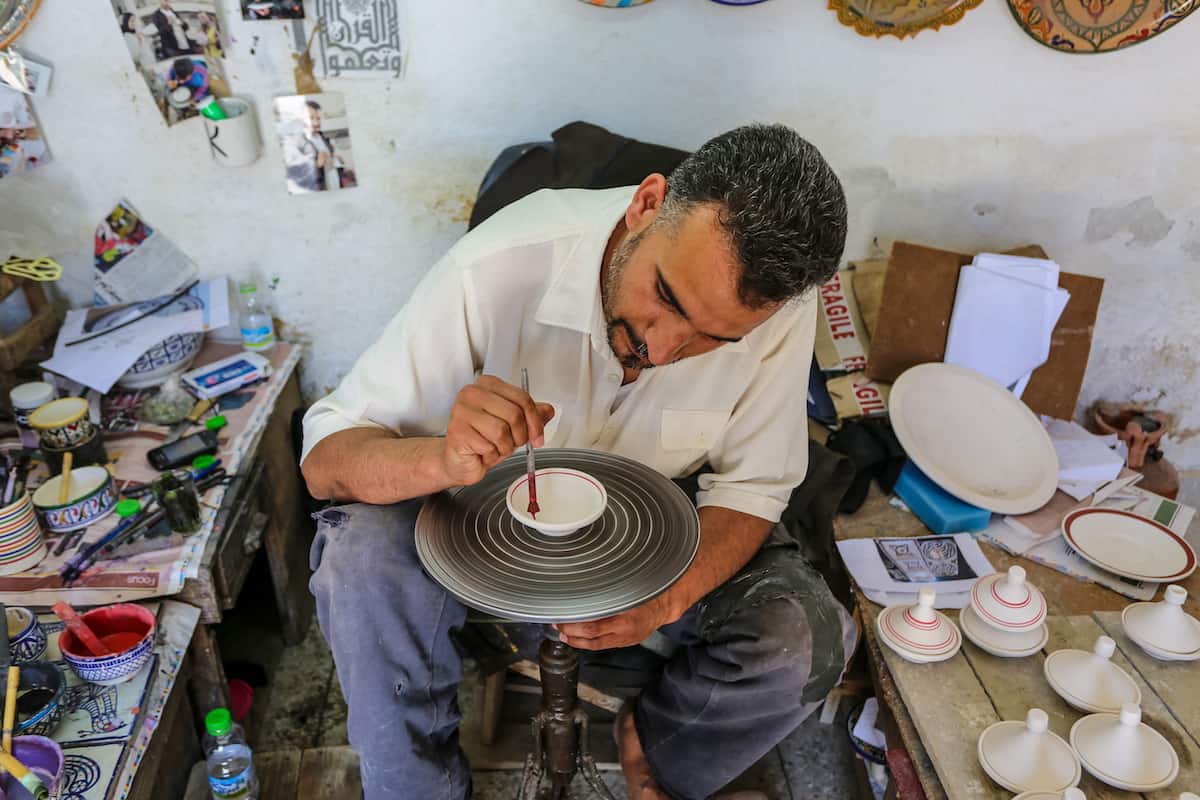

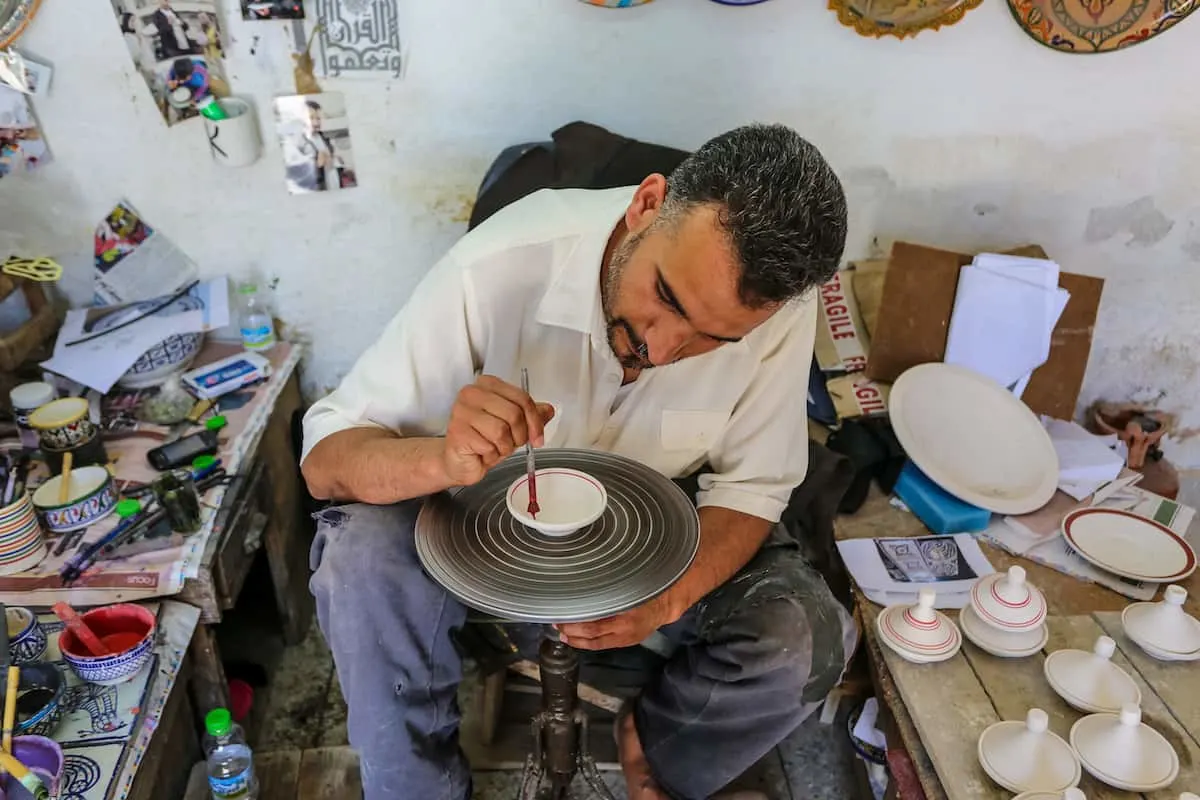

Once in Fes, you will notice a lot of ceramics with stunning decorative work embellishing ceilings and walls of mosques, madrasas, minarets and similar. Art Narji is an artistic center where free guides will walk you through the whole production process where you will learn about the traditional methods used to get ceramics, pottery, and mosaics of high quality.
To get to Art Narji take a taxi from Medina which should cost around 15 dirhams.
⇟ More articles from Morocco that might interest you:
➳ Read More: The Ultimate 9 Day Itinerary to visit Morocco
➳ Read More: 14 Photos to inspire you to visit Essaouira
➳ Read More: 14 Photos to inspire you to visit Chefchaouen
➳ Read More: What to do and see in Marrakech
➳ Read More: Budget Friendly accommodation in Marrakech
➳ Read More: Glamping Guide: The Best Luxury Camp in the Sahara Desert in Morocco
➳ Read More: Luxury accommodation in Marrakech
Save this article for later ⇟
